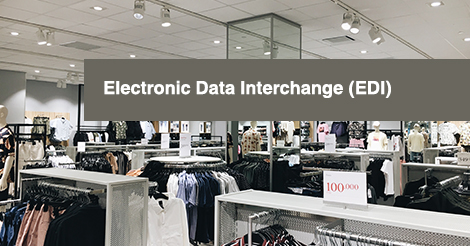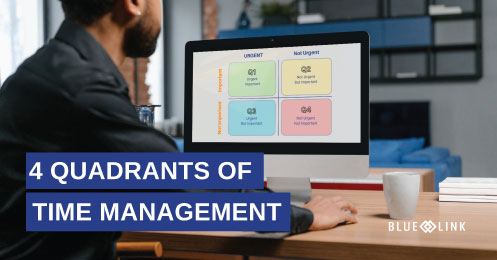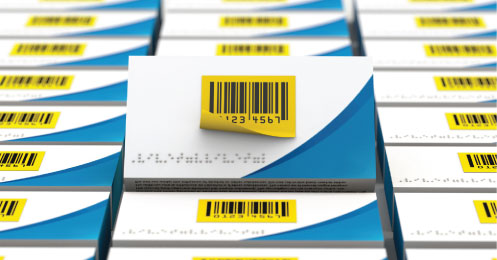In a business setting, EDI stands for “Electronic Data Interchange” and is used to exchange electronic documents between trading partners in the supply chain. EDI represents a set of standards (or formats) for information that can be electronically exchanged between two different parties.
Larger companies (for example, big-box retailers) commonly require that their suppliers and vendors in the supply chain can support EDI transactions to do business with them. This makes it easy for large companies to communicate electronically with multiple other businesses (all following the same data format) no matter what types of systems these companies are using. Having a universal format for specific document types makes it easy to submit and receive information from a variety of different partners in the supply chain – assuming you have the proper systems in place to translate that information. Every type of EDI transaction will require some level of integration between two or more systems to translate the data.
What Information Does an EDI File Include?
Although EDI files follow a specific standard, there is still a lot of room for interpretation when it comes to understanding the information being stored in the file. For example, a purchase order being sent by one company may contain different information from that of another company.
This information can include:
- The format and size of the PO number or reference
- Date information
- Billing information
- Shipping information
- Line item information including quantity, product number or UPC code, product description, and price
In addition, the information that is being stored is not in an easily readable format and therefore requires processes and/or systems for translation of the information in order to send and receive it. The idea is that a company will send EDI files from their back-end software to one of their customers’ or suppliers’, however in practice, EDI files do not move directly from one company’s ERP solution to another. Instead, the flow of information can be facilitated manually or automatically depending on the systems you have in place.
Every type of EDI transaction will require some level of integration between two or more systems. In order to do this and to properly translate the information and send it to the appropriate system, businesses may choose from one of several options. The major difference between the options is whether you want the process to be automated. The first option, with no automation, is where the information flow is facilitated by a web portal and requires manual data entry. The second option which does involve automation, is where the flow of information is facilitated by a third-party EDI middleware company. Alternatively, some businesses may choose to internally customize a system to manage the automatic flow of information which would be option three.
Benefits of EDI
EDI can provide many benefits to your company, especially if it is properly integrated into a robust back-end ERP system. If you decide to integrate a more sophisticated EDI solution - using a third-party middleware system - these benefits include:
Greater flexibility
EDI allows companies to more easily work with electronic customer data, such as vendor tracking, purchases and returns, shipping, and inventory count.
Reduced labor costs
Given the automation that comes hand-in-hand with EDI, the amount of manual processing that occurs will decrease, in turn, reducing labor costs.
Increased production and performance
Using EDI means that errors through manual data entry are eliminated, information is stored electronically and is easily accessible, and invoicing can be done 24/7. In the longer term, processes can be better tracked and improved.
The product can move faster
Automation means that orders are processed more quickly, allowing orders to be filled and transactions to be closed much faster.
Increased business opportunities
By adhering to the same standard, two different businesses (even if they are located in different countries) can electronically exchange documents.
Oftentimes, large companies require their suppliers to follow EDI standards. Therefore, if your company uses EDI, it opens up the door to be able to do business with these larger distributors or retailers. If you need to update your back-end inventory and accounting system in order to accommodate EDI, make sure you find an ERP solution that can facilitate integration with EDI translation services. When everything from purchases to billing at your company must meet EDI standards, this integration will allow the import and export of transactions between your ERP system and approved EDI service providers
EDI Data Flow
Before we discuss each option for EDI translation in more detail, let’s first look at how EDI works. For this example, let’s pretend that a large retail business (Company ABC) wants to send your distribution business a purchase order for more products through EDI.
Essentially how this works is that the large retail business’ ERP system will send out a purchase order that gets translated into an EDI-specific file type, known as an 850. This 850 then gets stored online, transferred via AS2 or FTP for your business to retrieve. In order to retrieve the 850 and translate it back into a format that is readable, you would either subscribe to a web portal service or work with a piece of EDI middleware software (or as mentioned previously, utilize your own custom software). Choosing one of the two latter options will not only translate the 850 but also automatically populate information within your ERP.
Options for Utilizing EDI
The EDI translation service that you choose will depend on how many EDI transactions you deal with regularly and how automated you want the process to be. Your options are as follows:
(1) Subscribe to a web portal service – The first option is to work with a third-party web portal system that stores the 850 file information and translates it into a readable format for your team to review. Depending on the customer you’re working with, they may have their own version of a web portal system available as well. Either way, in this situation you would have to manually check the portal on a regular basis for new orders and then download those orders or print them to be manually rekeyed into your own ERP. Any files that need to be sent back to your customer (such as an Advance Shipping Notice or Invoice) will then have to be rekeyed into the portal for your customer to retrieve. This option works best when you’re dealing with a low volume of EDI orders because of all the manual work involved.
(2) Work with a piece of EDI middleware software – This option involves working with a third-party EDI middleware service and provides the benefit of automated information transfer. Although ERP solutions may have built-in EDI capabilities, this feature is often provided by a third-party EDI middleware system running behind the scenes. The major benefit to outsourcing this process (as when outsourcing most processes) is that you will have access to the expertise and experience of a company whose sole focus is on EDI translation services. In this situation the middleware company interacts with the 850 data being stored online and with your own ERP system through a web services API1. The third-party middleware software will regularly check for new 850 files being stored online and it will then decipher the 850 data into a readable format and send it to the appropriate place within your ERP. For example, the middleware would read and translate the 850 file, entering it as a new sales order within your system.
(3) Build a custom system - Option three would require custom programming from your internal team in order to create a system that provides the same functionality as option two. As with any custom project, there are many pros and cons to creating a system internally vs. outsourcing.
If you choose either of the latter options, you will need to make sure that the EDI middleware system or custom system you have developed, can properly integrate into your back-end ERP system. This integration will allow the import and export of transactions between your ERP system and approved EDI trading partners.
Examples of EDI use in Business:
- EDI allows for easy communication between warehouse and business locations
- EDI helps businesses track and update inventory information
- EDI enables the sharing of information between different members of the supply chain (such as suppliers and distributors)
- EDI can even be used to transmit financial information and payment in electronic form – known as Electronic Funds Transfer or EFT
EDI Business Scenario:
- A purchase order is generated from Company ABC’s ERP software in an EDI format known as an 850.
- 850 is sent to an internet storage site and transferred via AS2 or FTP.
- 850 data is then picked up electronically (most often on a scheduled basis) by the third-party EDI middleware.
- Middleware deciphers the 850 data and sends it to the distribution business’ ERP via an API.
- API allows data from the EDI middleware to be understood and populates the associated document in your ERP (in this example a sales order). a. If the purchase order is for multiple locations, EDI middleware understands this and will create multiple sales orders in the ERP.
- Confirmation receipt of order is sent from EDI middleware or sometimes your ERP back to the online storage.
- Company ABC’s ERP picks up the confirmation from the Internet storage site for processing.
Some common EDI file types include:
| Data Type | EDI File Type |
|---|---|
| Purchase Order | 850 or 875 |
| Invoice | 810 or 880 |
| Advanced Shipping Notice | 856 or "ASN" |
1An API or “Application Program Interface” is a set of routines, protocols and tools for building software applications. An API specifies how software components should interact and allows two separate systems to communicate and share information with one another.











